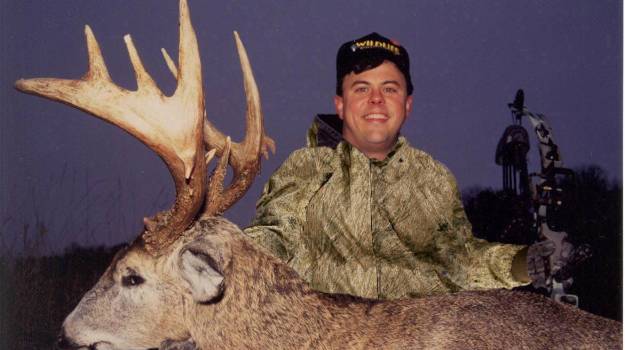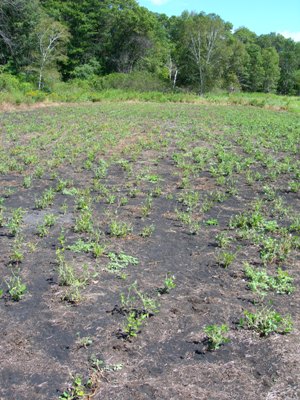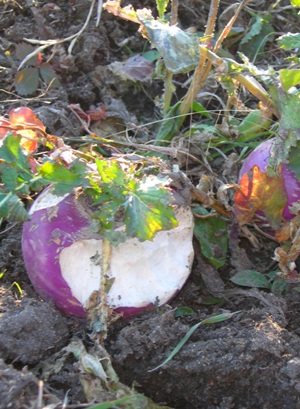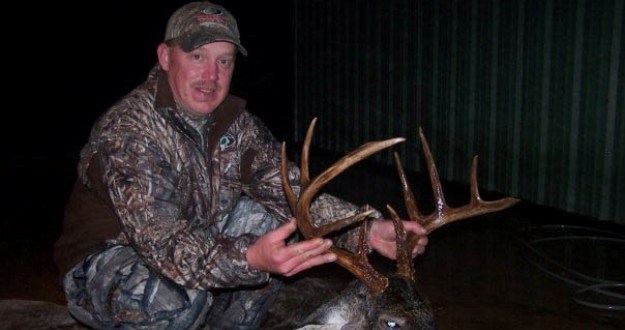
By Todd Amenrud
During late summer and fall planting season much of what will be sewed are seeds that grow plants meant for attraction. Some of the plants also have great nutritional value too, but most hunters really don’t think about that. They want a plot that will give them harvest opportunities. For this type of a “hunting plot,” plant selection, plot design and timing your plantings are very important components for success.
Deciding what to plant and plot design go hand in hand. In my view, variety is a definite key when designing a hunting plot. Because of a whitetail’s needs changing so often during the season, I never "put all my eggs in one basket."
In my “hunting plots” my goal is to draw them in so I can kill them, or to use it as a magnet so that I can intercept them on the way to the plot. In these plots, I try and “leave the table set” for them all through the season, or as long as I can. If you just plant one thing in a specific plot you are limiting the time that you are going to be able to use it for attraction. With small plots you can’t plant enough of any one thing if you plant too many things, so with small plots you must be very “targeted” in your approach. You need to know the timeframes that certain plants are the most palatable and try to time hunting that crop when it’s at the peak of its attraction.
 It obviously depends on many things, one of the most important being a plot’s size, but I will probably divide a specific hunting plot into 2, to as many as 6 sections. You must have adequate acreage to do this “variety tactic” justice. For instance, if you have only a ½ acre plot, you are probably better off planting just one blend. Otherwise, there’s not going to be enough of any one cultivar to keep them coming back. They’ll wipe you out too soon. If you have many smaller plots, or are smack-dab in the middle of heavy cash-crop farming to take some of the pressure off of your plots, you may be able to get away with more variety in smaller plots. Again, it depends upon many factors, sometimes you just have to experiment.
It obviously depends on many things, one of the most important being a plot’s size, but I will probably divide a specific hunting plot into 2, to as many as 6 sections. You must have adequate acreage to do this “variety tactic” justice. For instance, if you have only a ½ acre plot, you are probably better off planting just one blend. Otherwise, there’s not going to be enough of any one cultivar to keep them coming back. They’ll wipe you out too soon. If you have many smaller plots, or are smack-dab in the middle of heavy cash-crop farming to take some of the pressure off of your plots, you may be able to get away with more variety in smaller plots. Again, it depends upon many factors, sometimes you just have to experiment.
Depending upon where you are in the country, some of my “hunting plot” choices are spring planted items. If I have adequate acreage, let’s say at least an acre, my hunting plots will include; a good clover and chicory blend, Round-Up Ready corn and soybeans, a blend where one of the main components is brassicas and a blend where the main component is cereal grains. These four basic plantings will give me a plant that will keep them coming to the plot from before bow season begins until late muzzleloader is over or the food is gone. There are a plethora of different options that could also be added, but these make it easy.
Day in and day out perennial clover can be very attractive to whitetails and at certain times chicory is one of the best magnets I’ve seen. Clover Plus is the blend I will typically choose for this job. The New Zealand clovers are more succulent and produce much more leaf matter than our home grown U.S. clovers do. This crop should be spring planted in the north and must be maintained and mowed throughout the growing season.
So many managers wonder why the deer aren’t hitting their clover. Then I ask them, “when was the last time they mowed it? “Aahhh…I don’t remember,” is a typical answer. Frequently mowed perennials are much more attractive to whitetails than a tough, stalk-ridden plot that flowered three weeks ago.
With the corn and soybeans we have another angle covered. If I’m cash-crop farming or planting big plots of corn or beans I plant them separately. But for a food plot situation I really like planting them together. I choose two varieties of Round-Up Ready corn and three varieties of Round-Up Ready beans and plant them together. The carbohydrates that the corn produces will attract your buck if you get cold temperatures, and depending upon the time of the season, they will consume the soybean leaves early and the dried beans late.
 Brassicas are simply the best deer food that I know of. I’ll also lump sugar beets into this category. They are the best late season attraction and wintertime nutrition that I know of. Cold temperatures are needed to turn the plants to their most palatable, but whitetails in different areas may react differently to the plant. On my Ontario property they eat blends like Maximum and Winter Bulbs & Sugar Beets as fast as I can grow them. Once the cold temperatures convert the high levels of starch in the plants to sugar – look out! I have not seen a better late season draw.
Brassicas are simply the best deer food that I know of. I’ll also lump sugar beets into this category. They are the best late season attraction and wintertime nutrition that I know of. Cold temperatures are needed to turn the plants to their most palatable, but whitetails in different areas may react differently to the plant. On my Ontario property they eat blends like Maximum and Winter Bulbs & Sugar Beets as fast as I can grow them. Once the cold temperatures convert the high levels of starch in the plants to sugar – look out! I have not seen a better late season draw.
How much acreage you devote to brassicas should depend upon how long the hunting season is and whether you hunt a lot during late season. Also consider how well your deer herd is accustomed to them. In the south brassicas and beets may be better off for a wintertime food source in a “nutrition plot.” However, if you get cold temperatures during the hunting season you can have the hottest plot for miles around.
Lastly, Outfitter’s Blend, Trophy Oats and blends with a high ratio of cereal grains are the final piece of the puzzle. The carbohydrates and energy that plants like oats, wheat or triticale produce will be desired by both bucks and does during the fall. Timing your planting is important with these plants, the majority of these cereal grains are the most palatable during their first 45 to 60 days of growth. You want to plant them so that are at the peak of their attractiveness when you want to hunt the site.
If I had to pick one blend for attraction during the rut here in the north (we’ll call it the first of November through Thanksgiving) I would probably choose a blend that has both cereal grains and brassicas. Granted, during the rut a buck will drop his food intake to 5% to 10% of what he normally takes in, his focus is on “the ladies,” but guess where the ladies will be? Blends like Full Draw, Green Patch Plus and our new Last Bite (developed by the Drurys) are easy to plant and grow and give you the combination of two of the most attractive plants during the fall. The biggest difference between the three is in the ratios of cereal grains to brassicas.
I’m not guaranteeing that you are going to sit on the edge of your plot and knock over a Pope & Young buck standing right in it. It might be wise to set up an ambush to try and intercept him 200 yards off of the plot on his way to it. But if you do things right, and don’t put very much pressure on the spot, you can harvest Pope & Young bucks right in your plots. Regardless of where you set up your ambush the “harvest plot” is the reason that he’s traveling to the area and these “four horsemen” will help you make the kill.




























